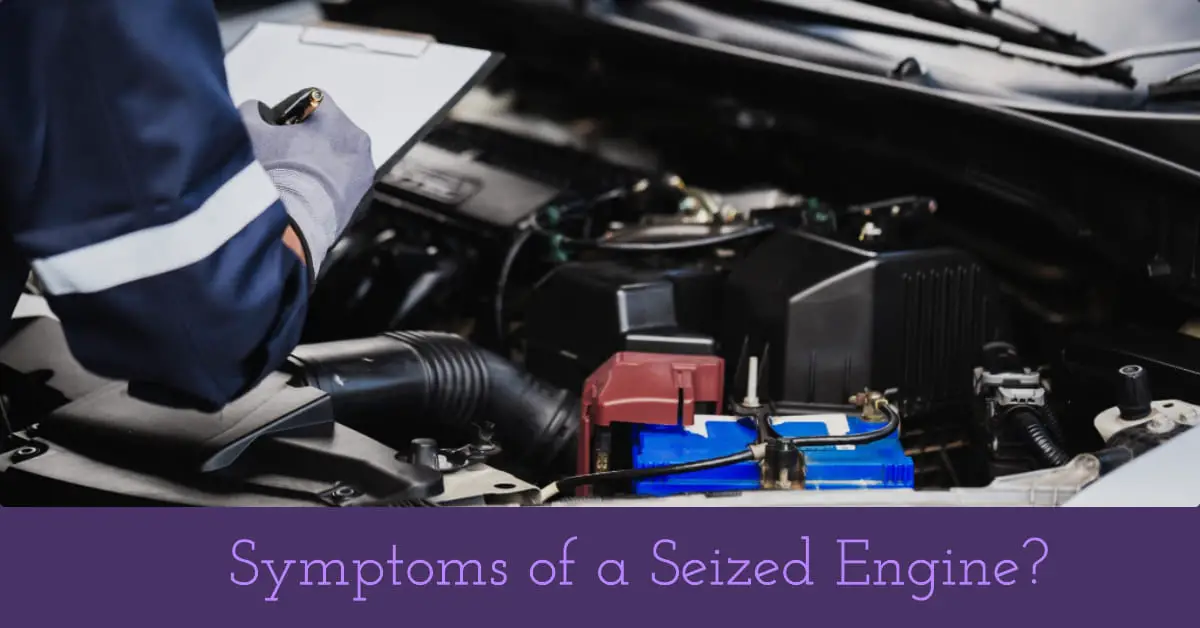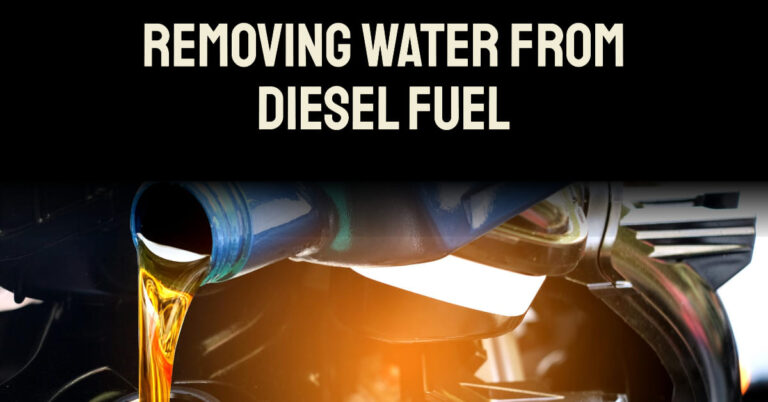Symptoms of a Seized Engine: Guide For Easy Fixes

Have ya ever turned the key in your ride’s ignition, only to be met with an unsettling metal-on-metal grinding noise? Or maybe a concerning plume of white smoke pouring out from under the hood? If so, your engine could be seized up – which ain’t exactly ideal.
But what in tarnation causes an engine to seize in the first place? And how the heck can ya tell if your motor is indeed seized? Most importantly – is there anything that can be done to get your wheels back on the road again without breaking the bank?
Let’s dive under the hood and get to the bottom of this seized engine business once and for all. Here’s everything you need to know about spotting the symptoms, understanding the causes, and exploring potential repairs for a seized motor.
Table of Contents
Can You Summarize the Key Points?
A seized engine is when internal parts overheat, expand, and get stuck – preventing the motor from turning over. It’s often caused by insufficient oil or coolant. Key symptoms include loud knocking noises, white smoke, difficulty starting, and sudden loss of power. While costly, options exist to rebuild, replace, or repair a seized engine if caught early. Regular maintenance is key to prevention.
What Exactly Will Be Covered in This Guide?
- Defining what the heck a seized engine actually is
- The most common tell-tale symptoms signaling an engine seizure
- The root causes behind why engines end up seizing
- Tips for diagnosing a potential engine seizure issue
- Available repair options – and whether they are worth it
- Key preventative maintenance steps to avoid seizing
So strap in and let’s get rolling on understanding seized engines from top to bottom. Pedal to the metal!
What in the World is a Seized Engine?
Before jumping into the symptoms, it helps to level-set on what exactly causes an engine to seize in the first place.
In simple terms, a seized engine is when the moving parts inside the motor overheat, expand, and then stick together – preventing the engine from turning over when you try to start it.
The normal combustion process creates a great deal of heat and friction between engine components. Motor oil and coolant help make sure engine parts stay lubricated and regulated at proper operating temperatures.
But when oil and coolant levels get too low, the internal components have no protection from all that heat generated by the engine. Parts then overheat, swell up, and make contact with each other in a way that creates even more friction and strain.
Think of it like a jog – a nice loosy-goosy jog keeps those leg joints limber. But sprint at full speed for too long and those legs get pumped full of lactic acid, tightening up those muscles and ligaments until they practically seize up! Same idea with a seized motor – things literally get stuck and unable to move.
The end result is an engine that resists turning over, since the starter motor lacks enough oomph in reserve to overcome all that increased internal friction. That’s why trying to crank the engine makes such an awful sound – like metal grinding on metal (which is exactly what’s happening!).
While a seized engine usually calls for some pricy repairs, it doesn’t necessarily mean your wheels are done for good. But catching it quickly is key before lack of oil or overheating causes permanent damage.
So what are the most common signs indicating your engine may have seized up? Let’s cover that next.
The Top Signs Your Engine Has Seized
Some symptoms of a potential engine seizure are more apparent than others. Here are the key things to watch out for:
1. Loud Metallic Knocking or Tapping Coming From the Engine
One of the most telling signs of an engine seizure is the awful sound when you try turning the motor over.
Imagine the noise of banging pots and pans together – that harsh metal-on-metal clanking. Now picture hearing that directly under the hood of your car when you turn the ignition key. Definitely not a sound ya want to hear!
This knocking occurs because the swollen internal components are smacking into each other as the starter motor tries in vain to crank the engine. The lack of proper lubrication between parts causes them to make contact in a way that creates friction and resistance.
The noise generally gets faster and louder the more you try to accelerate. It may start and stop intermittently if the engine catches momentarily. Bottom line – if you hear a loud knocking under the hood, get it checked out ASAP. Could be nothing, but better safe than sorry when it comes to potential engine damage.
2. Difficulty Actually Turning Over the Engine
If you twist the key and the engine doesn’t respond like normal, that’s a strong sign of a potential seizure.
You may hear the starter motor straining as it struggles to rotate the crankshaft against the added friction inside the motor. But despite the whirring of the starter, the engine just won’t quite turn over.
Almost like something is physically blocking it from cranking. Because in a way, something is – all those swollen up internal components wedging things tightly in place.
Now, trouble starting could be caused by other issues too like a depleted battery, bad starter, or ignition problems. But combined with other symptoms of engine seizure, difficulty cranking is a big red flag for sure.
3. Smoke From Under the Hood, Especially White or Blue
Seeing smoke billowing out from under the hood is never a good sign. But certain colored smoke can point to symptoms of an overheating or seizing engine.
Thick white or even light blue smoke is a sign that oil may be leaking within the motor and burning off on the hot components. As engine parts swell and seals start to fail, oil can slip past worn areas and make its way onto the hot valves, cylinders, turbocharger, etc.
The burning oil then pours from the engine as bluish-white smoke once you start the motor. Definitely have a mechanic investigate the cause of any colored smoke coming from the tailpipe or under the car right away.
4. Sudden Loss of Power, Especially When Accelerating
Does your ride seem like it’s suddenly down on power? Does it chug or misfire when you hit the gas or head up a hill?
This loss of oomph under strain could stem from the increased friction within the engine making it hard to reach higher RPMs. Misfiring, hesitation under acceleration, trouble going up inclines, or even stalling out can all be signs of a potential seizure.
If your motor seems to bog down when you need more power, it likely indicates something is up internally restricting performance – very possibly an oncoming seizure.
5. The Check Engine Light Comes On
Lastly – if that dreaded check engine light suddenly flashes to life, don’t ignore it!
The computer monitors various engine sensors to detect issues like misfires, overheating, loss of compression, etc. Any sensor readings that don’t match normal parameters cause the computer to turn on the check engine light and log a trouble code.
Connecting an OBD2 scanner tool can help read which specific error codes are stored. This gives insight into what exact problem the computer detected that triggered the light.
Some common codes tied to a seized engine include:
- P0301 – Cylinder 1 Misfire Detected
- P0302 – Cylinder 2 Misfire Detected
- P0303 – Cylinder 3 Misfire Detected
- P0304 – Cylinder 4 Misfire Detected
- P030X – General Random/Multiple Cylinder Misfire Detected
- P0351 – Ignition Coil A, Primary/Secondary Circuit Fault
- P0352 – Ignition Coil B, Primary/Secondary Circuit Fault
- P0353 – Ignition Coil C, Primary/Secondary Circuit Fault
- P0354 – Ignition Coil D, Primary/Secondary Circuit Fault
- P0300 – Random/Multiple Cylinder Misfire Detected
So in summary – be on high alert if the check engine light pops on unexpectedly. Use a scanner to read the codes, diagnose the cause, and address any potential engine issues ASAP. Don’t gamble with just ignoring it.
Common Causes Behind Why Engines Seize Up
An engine seizure usually stems from one of three root problems:
1. Low/Insufficient Oil
2. Engine Overheating
3. Sludge Buildup
Let’s dive into how each can lead to the nightmare of a seized motor.
1. Insufficient or Low Oil Levels
Motor oil is the lifeblood of any engine. It provides the vital lubrication between all the internal moving parts that allows everything to spin freely without excess friction and heat.
But when oil gets too low or depleted, those components have no choice but to make direct contact with each other. This metal-on-metal grinding quickly generates large amounts of heat and accelerates the expansion of parts.
So what exactly causes oil to get too low in the first place? Some common culprits include:
- External oil leaks – Gaskets, seals, hoses, etc deteriorate over time and allow oil to drip or leak externally. Identifying and fixing leaks early is key.
- Infrequent oil changes – Oil gets dirty over time and needs swapped out regularly. Skipping changes allows contaminants to build up.
- Failing to check dipstick – Not tracking oil level leads to low reserves without realizing it. Check monthly at a minimum.
- Too long between oil changes – Today’s longer oil change intervals still require sticking to the recommended schedule.
- Using wrong weight oil – Make sure the oil matches your make/model and operating climate.
Without sufficient lubrication to control friction and temperature, the engine internals eventually overheat, swell up, and seize. Like running a marathon without water!
2. Engine Overheating Issues
Just as oil keeps the engine’s moving parts in check, the cooling system works to regulate overall operating temperature and prevent overheating.
Coolant absorbs heat from the cylinders, heads, turbocharger, and other hot components. It circulates this heat to the radiator where it dissipates before cycling back into the motor.
When the cooling system can’t do its job, the resulting overheating also risks a seized engine. System failures or leaks that reduce coolant and pressure include:
- Radiator fan malfunctioning
- Water pump failure
- Thermostat sticking closed
- Coolant leaks from bad hoses, gaskets, reservoir
- Blocked passages in the radiator fins or heater core
Without the full cooling system operating optimally, the engine internals reach dangerously high temps. This again leads to the expansion of metal components and risk of seizure once parts make contact.
3. Sludge Buildup in the Oil
Even if oil levels seem okay, extensive sludge formation inside the motor can still lead to a seizure.
Oil naturally breaks down from heat and contamination over time, turning into thick, tar-like deposits. This sticky sludge can obstruct oil passageways, coat engine parts, and restrict vital lubrication.
Lack of maintenance greatly accelerates sludge buildup. The #1 cause? Infrequent oil changes. Going too long on dirty oil allows substantial varnish and deposits to form.
Other factors like using the wrong weight oil, inadequate engine operating temps, excessive idling, and frequent short trips can also speed up sludging.
Once enough sludge clogs the oil channels, engine components run dry on lubricant, heat up, and ultimately seize. No bueno.
How To Diagnose a Seizing Engine?
Suspecting an impending engine seizure? Here are some pro tips on how to start diagnosing the root cause:
- Listen for straining when trying to start – Turn the key and listen closely for any odd grinding, tapping, or whirring noises coming from the starter motor. Does it sound like the engine wants to turn over but can’t quite get there? That’s very telling of internal resistance.
- Check under the car for oil or coolant leaks – Look for any pooled fluids or fresh dripping under the engine bay, near the rear main seal, at cylinder heads, etc. Actively leaking oil or coolant points to low fluid levels risking overheating and seizure.
- Monitor engine temperature gauge for overheating – Keep an eye on the coolant temp reading when driving, idling, and stopped. Does it trend closer to the red zone? Any sharp spikes in temperature? Consistent overheating suggests cooling system issues.
- Use an OBD2 scanner to read trouble codes – Connecting a scanner to read any check engine light error codes can provide insight into misfires, compression loss, incorrect fuel trim levels, or other red flags of a seizing motor.
- Do a compression test – A cylinder leakdown or compression test can help identify any unusually low readings that indicate loss of compression from seized pistons or rings.
- Check if oil looks sludgy – Inspect the oil dipstick and cap for any thick, sticky deposits or an unusually dark color. This may reveal sludge buildup inside the motor impeding lubrication.
- Look for white exhaust smoke – White/blueish smoke from the tailpipe can mean coolant or oil is burning inside the combustion chambers due to damage from overheating or lack of sufficient lubrication.
Catching warning signs early and thoroughly diagnosing the root issue is key to salvaging the engine. Once you pinpoint the cause, you can explore potential repair options.
Available Repairs for a Seized Engine
So the bad news has come – the mechanic says your engine’s seized up. Now what? Is your only option a full replacement, or do repair possibilities exist?
In some cases, a seized engine can in fact be saved depending on the extent of damage. Here are three potential routes to resurrect your motor:
1. Remove and Rebuild the Existing Engine
If the basic bottom end of the engine still checks out, a machine shop can disassemble and rebuild your seized motor.
This involves checking the engine block for any cracks, boring out the cylinders, replacing the pistons/rings, installing a new crankshaft and bearings, rebuilding the cylinder heads, etc.
The block gets machined flat, worn journals polished, and new parts fitted to revive performance and prevent re-seizing. It’s essentially a heart transplant for the engine!
Cost estimate: $4,000 and up
Consider if: Damage is limited to internals only. Block and heads are structurally sound. Compression loss is repairable.
2. Install a Used/Rebuilt Replacement Engine
For more peace of mind, a lower mileage used engine sourced from a salvage yard can also be installed. These come from wrecked vehicles, but get fully cleaned and inspected first.
The cost varies widely for used engines based on factors like make, model, mileage, and demanded. But in general, a used motor runs cheaper than rebuilding the seized one.
Just be sure to have your mechanic verify the replacement’s condition before swapping it in. There’s some variability in getting a used engine.
Cost estimate: $2,000 – $4,000+
Consider if: Budget is tight but you want a fresh engine. Or if rebuild costs exceed replacement.
3. Full Engine Replacement With New Crate Motor
Lastly, you can go for the gold standard – a brand new, zero mileage crate engine ordered through a parts supplier or dealership.
These ship straight from the factory, often using updated parts and technology. While the most expensive path, they provide like-new performance and reliability.
For many, the cost of a crate engine can still make sense if it means not having to gamble on a used motor or sink money into rebuilding a seized one. Shop around for deals.
Cost estimate: $4,000 – $8,000+
Consider if: Only a factory fresh engine will do. Using improved new parts is preferred.
While pricey, seized motors don’t automatically mean the end of the road. If caught early before catastrophic damage, restoration may be possible. Talk with a trusted mechanic about the best route for your situation and budget.
Preventing Seized Engines With Proper Maintenance
They say an ounce of prevention is worth a pound of cure. That’s definitely true when it comes to avoiding the headache of an engine seizure in the first place.
Here are some key maintenance steps to keep your motor running right:
- Regular oil changes every 3-5k miles – Don’t skip or delay oil changes. Swap it out regularly to prevent sludge buildup.
- Fix any oil or coolant leaks ASAP – Don’t ignore leaks or drips. Repair issues immediately to maintain proper fluid levels.
- Address overheating problems right away – If you see the temp gauge creeping up, diagnose the cooling system to prevent strain on the motor.
- Use quality oil and change filters – Buy oil that meets manufacturer specs and install a fresh filter with each change.
- Check all fluid levels monthly – Quickly catch any low oil, coolant, brake or transmission fluid before it’s dangerously depleted.
- Watch for initial symptoms – Don’t dismiss odd noises, trouble starting, or smoke under the hood – they could signal impending issues.
- Consider higher mileage oil – At around 75k+ miles, switching to high mileage oil helps condition seals and deter leaks.
Sticking diligently to maintenance schedules, using quality fluids, and addressing problems promptly keeps your engine running smoothly for the long haul. Remember – prevention is always easier than the cure!
Conclusion
Like we covered, a seized engine usually spells a world of hurt – both in frustrating down time and costly repairs. But catching warning signs early and understanding root causes gives you a fighting chance at addressing the problem before it’s too late.
The key symptoms to watch for include:
- Loud knocking or tapping noises when trying to start
- Difficulty turning over the starter
- White/blue smoke from under the hood
- Loss of power under acceleration
- Illuminated check engine light
Slowing down and listening to what your engine is trying to say can help detect an impending seizure. Then you can dig into the root problems like insufficient oil, overheating, or sludge buildup and address the specific issues.
While the repair costs add up fast, options do exist in rebuilding, replacing, or repairing the engine if caught in time. And remember – diligent maintenance is the ultimate seizure prevention.
So keep your oil fresh, cooling system in check, and an eye out for any worrying symptoms. With smart prevention and early intervention when problems arise, your engine can keep going the distance for years to come and avoid getting seized up.
Now you know what really causes an engine to seize, how to spot tell-tale signs of trouble, steps to properly diagnose issues, available repair routes, and most importantly how to help avoid catastrophic engine failure through diligent maintenance.
Hopefully this guide gave you some peace of mind by answering all your pressing questions about seized engine causes, symptoms, diagnoses, repairs and prevention. Stay safe out there on the roads!






